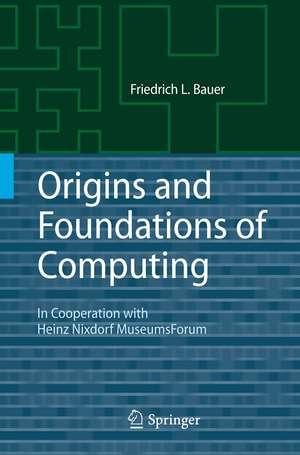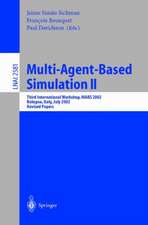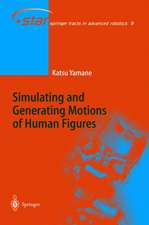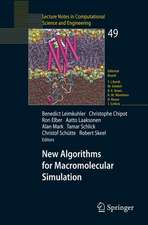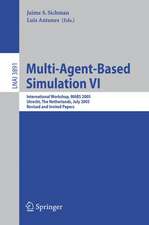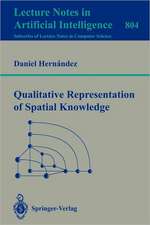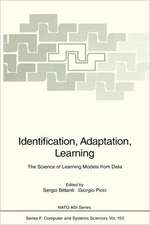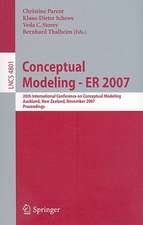Origins and Foundations of Computing: In Cooperation with Heinz Nixdorf MuseumsForum
Heinz Nixdorf Museums Forum Autor Friedrich L. Baueren Limba Engleză Paperback – 9 oct 2014
| Toate formatele și edițiile | Preț | Express |
|---|---|---|
| Paperback (1) | 172.54 lei 3-5 săpt. | |
| Springer Berlin, Heidelberg – 9 oct 2014 | 172.54 lei 3-5 săpt. | |
| Hardback (1) | 178.35 lei 3-5 săpt. | |
| Springer Berlin, Heidelberg – 17 noi 2009 | 178.35 lei 3-5 săpt. |
Preț: 172.54 lei
Preț vechi: 215.67 lei
-20% Nou
Puncte Express: 259
Preț estimativ în valută:
33.01€ • 34.47$ • 27.32£
33.01€ • 34.47$ • 27.32£
Carte disponibilă
Livrare economică 14-28 martie
Preluare comenzi: 021 569.72.76
Specificații
ISBN-13: 9783642425639
ISBN-10: 3642425631
Pagini: 152
Ilustrații: VIII, 142 p.
Dimensiuni: 155 x 235 x 8 mm
Greutate: 0.22 kg
Ediția:2010
Editura: Springer Berlin, Heidelberg
Colecția Springer
Locul publicării:Berlin, Heidelberg, Germany
ISBN-10: 3642425631
Pagini: 152
Ilustrații: VIII, 142 p.
Dimensiuni: 155 x 235 x 8 mm
Greutate: 0.22 kg
Ediția:2010
Editura: Springer Berlin, Heidelberg
Colecția Springer
Locul publicării:Berlin, Heidelberg, Germany
Public țintă
ResearchDescriere
The Heinz Nixdorf Museum Forum (HNF) is the world’s largest c- puter museum and is dedicated to portraying the past, present and future of information technology. In the “Year of Informatics 2006” the HNF was particularly keen to examine the history of this still quite young discipline. The short-lived nature of information technologies means that individuals, inventions, devices, institutes and companies“age” more rapidly than in many other specialties. And in the nature of things the group of computer pioneers from the early days is growing smaller all the time. To supplement a planned new exhibit on “Software and Inform- ics” at the HNF, the idea arose of recording the history of informatics in an accompanying publication. Mysearchforsuitablesourcesandauthorsveryquickly cameupwith the right answer, the very rst name in Germany: Friedrich L. Bauer, Professor Emeritus of Mathematics at the TU in Munich, one of the - thers of informatics in Germany and for decades the indefatigable author of the“Historical Notes” column of the journal Informatik Spektrum. Friedrich L. Bauer was already the author of two works on the history of informatics, published in different decades and in different books. Both of them are notable for their knowledgeable, extremely comp- hensive and yet compact style. My obvious course was to motivate this author to amalgamate, supplement and illustrate his previous work.
Cuprins
Preamble.- Numerical Calculations.- Calculations Using Symbols.- After 1890: In Thrall to Mechanical and Electromechanical Devices.- After 1935: Formal Languages and Algorithms, ‘Universal Machines’ and Electronic Solutions.- After 1960: Informatics Begins to Take Shape.- Conclusion: Informatics and Microelectronics Are Mutually Dependent.
Recenzii
From the reviews:
"I read this book with great interest. It contains information about the history of computer science which is not normally available in such concise form, and in a style suitable for the broader public." (Niklaus Wirth, ETH Zürich)
"The computing and historical communities are very fortunate to have this perspective on the origins of the computing field from one of the great minds from the beginning of the modern computing era." (William Aspray, University of Texas at Austin)
“This treatment of the history of computing follows the historical path of computing as it originated in mathematics and logic and progressed into machine design and programming languages. … Any individual involved in computing will want to complete this easy read. … The numerous pictures and figures are appealing and draw the reader along from page to page. The book ends with a ‘Selected Readings’ section for readers who want a more detailed exploration of this rich history. I recommend this book.” (Brad Reid, ACM Computing Reviews, November, 2010)
"I read this book with great interest. It contains information about the history of computer science which is not normally available in such concise form, and in a style suitable for the broader public." (Niklaus Wirth, ETH Zürich)
"The computing and historical communities are very fortunate to have this perspective on the origins of the computing field from one of the great minds from the beginning of the modern computing era." (William Aspray, University of Texas at Austin)
“This treatment of the history of computing follows the historical path of computing as it originated in mathematics and logic and progressed into machine design and programming languages. … Any individual involved in computing will want to complete this easy read. … The numerous pictures and figures are appealing and draw the reader along from page to page. The book ends with a ‘Selected Readings’ section for readers who want a more detailed exploration of this rich history. I recommend this book.” (Brad Reid, ACM Computing Reviews, November, 2010)
Notă biografică
The author was among the pioneers in computing science, and he was deeply engaged in some of the developments outlined in the book.
Caracteristici
A distinctive view of the history of computers, written by one of the pioneers of the field
Includes supplementary material: sn.pub/extras
Includes supplementary material: sn.pub/extras
